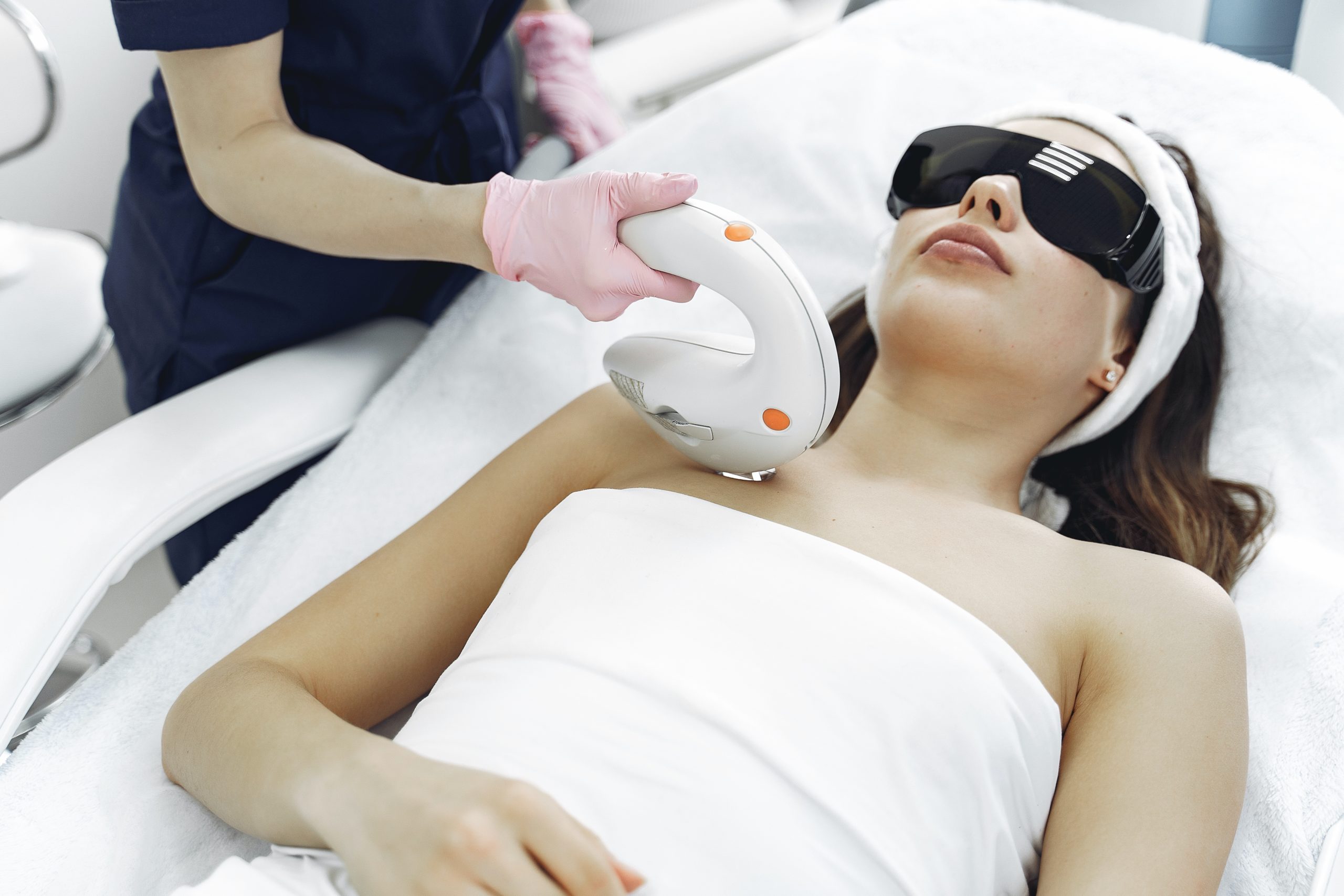Cosmetic lasers deliver quick, proven results unmatched by other skin resurfacing options, but these machines come in many different shapes and sizes with their own unique capabilities.
If you’re looking to purchase a laser, you’ve likely realized by now that there are many factors to consider. Different machines make use of different technologies, enabling you to offer different treatments to your patients, but they’ll come with their own drawbacks, as well. It’s your job to determine what kind of laser will be best for your practice.
To help you on this journey, we want to finally put the question of whether to get an ablative vs non ablative laser to rest. These two technologies approach the task of skin resurfacing with the same goal but different strategies. By understanding the role each type of laser can play in your practice—and the drawbacks each one presents—you’ll be able to make the most educated purchasing decision.
Ablative Vs Non Ablative: Technologies
The first thing you need to know is that both ablative and non ablative lasers can deliver fractional treatments—that is, they will treat the skin in a pixelated pattern, leaving portions of untreated skin in the treatment area. This is crucial in speeding up the healing process and reducing the risk of adverse side effects. Where ablative vs non ablative treatments differ is in the depth the treatments penetrate the skin. Cosmetic lasers treat skin imperfections by producing small columns of thermal injury. These thermal injuries are either non ablative, affecting only the top-most layer of the skin known as the dermis, or they can reach both the epidermis and dermis, as with ablative lasers.
Following a laser treatment, the skin undergoes a rapid healing process. Whether a patient receives an ablative or non ablative treatment determines the healing time and the level of discomfort they experience. While both types of laser treatments result in different healing times and side effects, they’re also helpful in treating different skin imperfections. The distinctions that can be made between ablative and non ablative lasers regarding the kinds of patients you can treat and the treatments you can perform are where you’ll be able to draw the most helpful conclusions.
Ablative Vs. Non Ablative: Patients & Treatments
Ablative Lasers
Example: CO2, Erbium
Ablative lasers vaporize the outer layers of a patient’s skin. Because they penetrate deeper into epidermis, these treatments are considered more invasive. However, ablative lasers are capable of producing the most dramatic results for patients, even after a single treatment. They can treat the most severe wrinkling, dyspigmentation, and scarring by allowing the skin to heal and structure at a much deeper level.
The downside? The recovery time for patients lasts up to two weeks, during which they’ll likely experience discomfort in the treatment area along with swelling, oozing, or crusting of the skin. Depending on the location of the treated skin, these side effects could very easily interrupt their daily lives, preventing them from meeting their professional and personal obligations. While the technology continues to improve and help recovery times decrease, ablative lasers still carry a higher risk of scarring, discoloration, and infection, too.
Who will ablative laser treatments work best for?
- Patients showing significant signs of aging:
- Patients who have deep or pitted facial scars
- Patients who want to see noticeable results quickly
- Patients who are able to take time off from work or other obligations to recover
Non Ablative Lasers
Examples: CoolTouch, Fraxel Restore, N-lite
Compared to ablative lasers, non ablative lasers are much less invasive. Essentially, they heat up the underlying skin tissue without damaging the surface layer, causing the body to produce new collagen. Non ablative treatments are most successful at improving the skin’s texture and tone, but they can also be useful in the treatment of fine lines, wrinkles and mild pigmentation issues.
The downside? Unlike ablative lasers which can yield significant results in a short period of time, non ablative lasers require multiple applications in order to begin to see noticeable results. Fortunately, the recovery between treatments is usually mild with patients able to resume normal activities immediately after. While there may be some mild swelling and redness, the treated skin does not normally appear visibly affected.
Who will non ablative laser treatments work best for?
- Patients who are relatively young with generally healthy skin.
- Patients who only have mild to moderate signs of aging
- Patients who are willing to see significant results over time
- Patients who aren’t able to take time to recover from a more invasive treatment
Ablative Vs Non Ablative: Decision Time
As you can see, ablative and non ablative lasers play different roles in your practice. If your clientele is younger and mainly requires treatment for mild to moderate occurrences of wrinkles, brown spots, sagging, and scarring, a non ablative laser may be a higher priority for you. On the other hand, ablative lasers are beneficial in treating more serious skin conditions including burn scars, deep wrinkles, pitted acne scars, dyspigmentation, syringomas, or stretch marks. If you’re looking to expand the types of procedures you can offer and the kinds of patients you can serve, investing in a high quality ablative laser makes sense.
Of course, as your practice grows, you’ll want to invest in both ablative and non ablative technology. No matter what you choose, you owe it to yourself and your patients to take the time to make sure you’re making the best investment. Whether you’re in the market for an ablative or non ablative laser, purchasing a used laser is likely the best option for you if you’re trying to balance the functionality and reliability with affordability.
Laser Resellers is a reliable, trusted source for used aesthetic equipment. We stock all of the devices we advertise in our warehouse, so you never have to worry whether the equipment you’re buying actually exists or not. We also make sure every machine is serviced by manufacturer-trained technicians, so whenever your laser arrives, it will be in perfect working condition.
Whether you’re looking to buy, sell, or trade in a cosmetic laser, Laser Resellers is ready to assist you. Reach out to us today, and let us know what you’re looking for! We’re happy to answer any questions you have.




